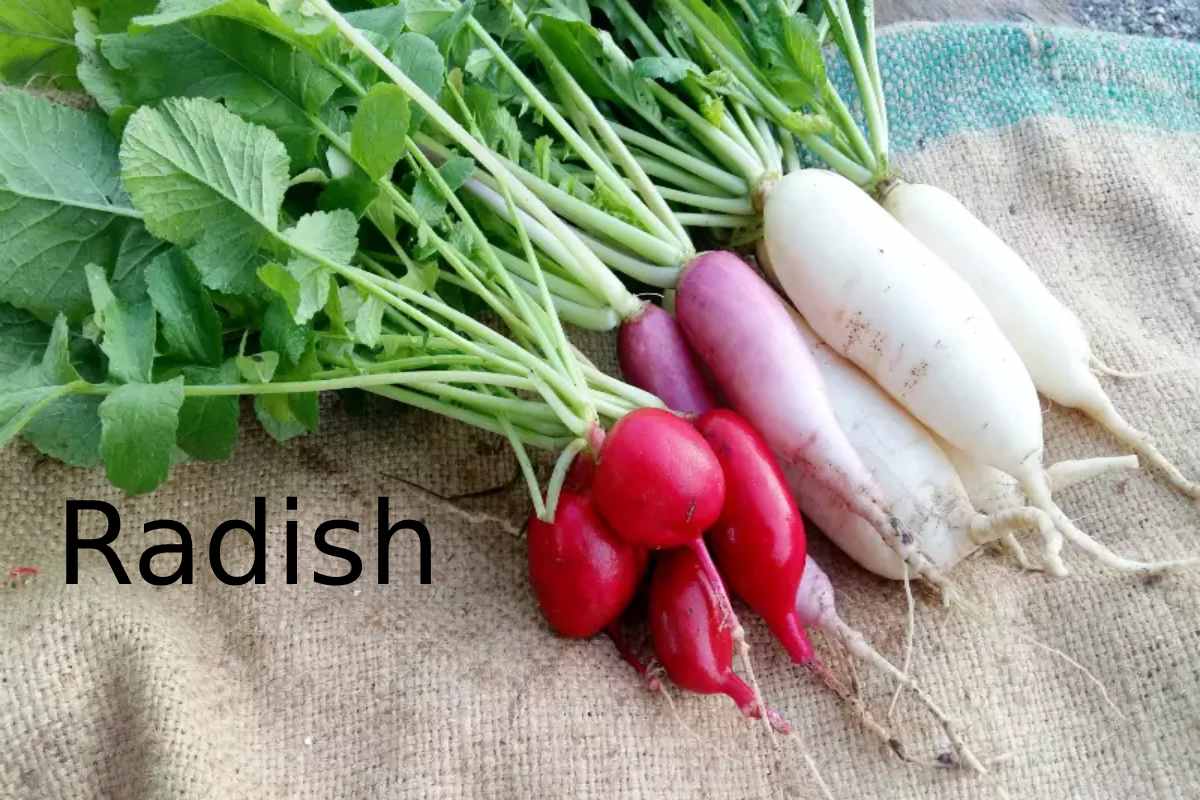Table of Contents
What is Radish?
Golden Roots: Radishes are native to China, where wild forms remain. They remain mentioned in historical Egyptian, Roman, and Greek records. The ancient Greeks prized them so much that they made tiny replicas in gold!
Radish Giants: In 1544, a German botanist reported seeing radishes that weighed 45 kg! By 1586, they were a common crop in England and were among the first European vegetables to be brought to America by Spanish colonists.
Radish Properties
Radish Although the radish (Raphine’s status) provides fewer nutrients than other edible roots such as carrots or turnips, it is dominant among medicinal foods.
As with many vegetables, the exact origin is not known. Some historians say it was known to the Chinese in ancient times.
“When radishes are in season, doctors can take a break,” says a Chinese proverb. It also stood in ancient Egypt, as some hieroglyphs allude to its therapeutic and cosmetic uses.
Later, the Greeks and Romans spread it throughout Europe. One of the first in-print references to the medicinal use of radish was by the 12th-century Italian physician Matthaeus Platearius in his Book of Simple Medicines, which stated that cooked black radish was effective against coughs caused by juices.
Pío Font Quer, a mid-century Spanish botanist, and pharmacist, also included them in his famous book Medicinal Plants. Subsequent studies have confirmed its wealth of active ingredients with healing potential.

Radish Properties
It is one of the vegetables with more water, almost 95%. It provides hardly any proteins (1.1%) or fats (0.1%), and the proportion of carbohydrates is also low (2%). But it stands out for its potassium (255 mg/100 g), vitamin C (27 mg) and folic acid (27 mcg).
Vitamin C is an antioxidant, preventing numerous ailments and forming red blood cells and collagen, which bones and tissues need.
Among the minerals necessary for the regeneration and transmission of nerve impulses and muscle activity, in addition to potassium, it also contains some calcium, phosphorus, iron, magnesium, and sulfur, which gives it its characteristic spicy taste.
Health Benefits of Radish
The radish belongs to the Brassicaceae family (or cruciferous vegetables such as cabbage or watercress), so it shares with these foods its antimicrobial, antioxidant, expectorant, purifying, immune-stimulating, and anticancer properties. Its vitamins, minerals, and phytochemicals undoubtedly make it an excellent food for maintaining health.
It is particularly recommended for arthrosis and as an appetite stimulant in naturopathy.
Slime Protection
Being rich in water is a good diuretic that favors urination and, therefore, eliminates fluids retained in the body. It also favors the purification of the blood and the purification of gastric, urinary and intestinal mucosa. Other ingredients include caffeine and chlorogenic acid, which all cruciferous vegetables provide. These acids inhibit the absorption of iodine and decrease the production of thyroxine, the thyroid hormone that controls metabolism and affects some emotional states. It is a highly recommended food for hyperthyroidism; On the other hand, you need to control your consumption if you suffer from an underactive thyroid.
Better Defense
The simple radish is a natural health treasure due to its cleansing, digestive, antibiotic, and anticancer properties. It is particularly indicated if you suffer from hepatobiliary diseases, hypertension, recurrent infections, allergies, anemias, arthritis, hyperthyroidism, or degenerative processes (cancer, multiple sclerosis). Still, it is also effective against difficult digestion and constipation to facilitate digestion .dream. or improve the skin.
Radishes in the Kitchen
There are several types of radish, and although the leaves can be eaten in a salad or infusion, it is usually the root consumed. From a plant point of view, they can be divided into three groups:
- Radishes (Raphine’s sativus sativus). They are the most cultivated, small, oblong or round, white, pink or red. Their slightly spicy taste makes them suitable for appetizers and digestives.
- Black radish (R. sativus Niger). Cylindrical and round, with black skin that is hard and difficult to digest, but with white flesh that is easier to digest. They are the most commonly used medicinally. Black radish relieves constipation and bloating, balances the intestinal flora, and prevents infectious diseases. It is also a potent antimicrobial agent, and its active ingredients neutralize bacteria, viruses and fungi that harbor mucous membranes. It is also cleansing, antibiotic and expectorant.
- Asian white radish (R. sativus longipinnate). This group includes those found in Southeast Asia and Japan.

